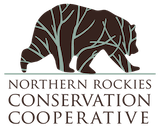Amphibian Monitoring in the Greater Yellowstone Ecosystem
Research Associates: Andrew Ray, Debra Patla, and Chuck Peterson
Subtitle: The Greater Yellowstone Wetland and Amphibian Monitoring Program (YELLsWAMP!) coordinates annual, ground-based surveys across Grand Teton and Yellowstone National Parks to document the occurrence of amphibian species and the condition of their breeding habitat. We also engage with focused, short-term field projects to investigate research and conservation questions.
Project Overview: Monitoring amphibians — a vital sign for GYE wetlands
Amphibians and wetlands are a Vital Sign for the Grand Teton and Yellowstone National Parks, informing parks and the public about trends in amphibian populations and how biologically rich wetland habitats are responding to climate change.
Backstory:
NRCC has provided administrative support and encouragement for amphibian monitoring projects in the GYE since the 1990s, and has been invaluable partner every year since 2010 for both the long-term monitoring and supplemental efforts. Amphibians are a significant component of biodiversity in the GYE, with a unique ecological niche that spans aquatic and terrestrial environments. Wetlands of the types used for reproduction are now recognized as the most climate sensitive habitats in the GYE, and the persistence of populations also signals the quality of the upland habitat on which adult amphibians depend for summer foraging, migrations, and hibernation. Unfortunately, amphibians are easy to overlook – they lack the status of state game species and federally-listed threatened/endangered species. Thanks to the collaborative efforts of multiple agencies, universities, and individuals, the GYE now has one of the longest running, multi-species amphibian monitoring programs in the Western U.S.
Four native amphibian species are widespread and often encountered in the wetlands of the GYE: the Boreal Chorus Frogs fills the spring nights with vigorous breeding calls, Columbia Spotted Frogs jump into streams and stare up from the water at anglers and hikers, Tiger Salamanders are underground or underwater much of the time but, surprisingly, are aglow under blue light, Western Toad tadpoles and youngsters form enormous eye-catching congregations. We are learning much about the status, distribution, and persistence of these species on public lands of the GYE. Reproductive failures in drought years inform us about how climate change may affect the future persistence of these species. The relative rarity of Western Toads raises questions about their apparent decline and its causes since the 1950s. Research needs, land management issues, and conservation priorities emerge from the monitoring.
Current Status: In 2021, we completed the 16th consecutive year of occupancy monitoring in Grand Teton and Yellowstone. We will continue the work in 2022, and with your help want to expand our work in strategic ways (see below).
Project Partners: NRCC, National Park Service, Northern Rockies Conservation Cooperative, US Geological Survey, Idaho State University, Montana State University, New Mexico State University, University of Wyoming, Meg and Bert Raynes Wildlife Fund, Greater Yellowstone Amphibian and Reptiles iNaturalist Project.
Project start year: 2010
Location: Grand Teton National Park and Yellowstone National Park
Support: If you would like to support amphibian monitoring, research, or outreach efforts please consider directing your donations to the Greater Yellowstone Wetland and Amphibian Monitoring Program project page. Donations will be used to support our annual monitoring activities and expand the monitoring through Special Projects carried out by NRCC associates and our project partners.
Special Projects:
Discovering and Sharing Information about Idaho’s Amphibians and Reptiles by Chuck Peterson and Patrick Giltz (December 2022)
Read a new publication from this team, published in 2022, reflecting on the results of 15 years of wetland monitoring
‘Remember the Toads’ – Monitoring Historic Western Toad Breeding Sites
Development of tools to characterize trends for some of the GYE’s rarest amphibian species – a partnership with Rocky Mountain Amphibian Project and the University of Wyoming
Update of the 1995 Field Guide to Grand Teton and Yellowstone Amphibians
Beaver and Biodiversity Linkages in Grand Teton National Park
Surveys for Northern Leopard Frogs in the John D. Rockefeller Memorial Parkway
Rotating photo exhibit – Amphibians of the GYE








